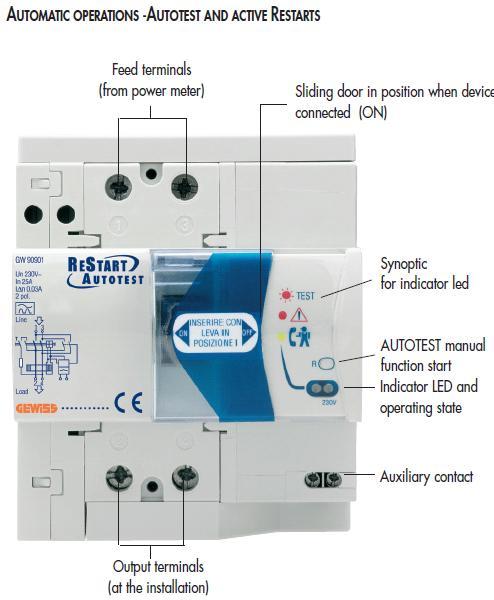As stated for a consumer unit to be a consumer unit it has to be type tested which means you can only use manufacturers recommended products for that unit otherwise it becomes a distribution unit and there may be issues where it is used by an ordinary person the same now it would seem applies to some RCD's which amendment 1 of BS7671:2008 has said should not be used by ordinary persons these
would auto reset themselves but no longer allowed in a house not that at £350 each you would want one.
Some RCD's like the X-Pole have a monitor built in to tell you where the leakage is approaching the point where it is likely to trip and trip at 90 - 100% of rated trip current but most are rated to trip between 50 - 100% of rated trip current.
There are also types AC, A, and B with inverter supplies using simulated sine wave we have to use A type but in the main we use the AC type.
The amount of milliamps required to trip also varies normally by a factor of 3 so 10ma, 30ma, 100ma, and 300ma the latter two often supplied with built in delay (S type) to ensure the 30ma will trip first although not uncommon for a fault to take out all RCD's.
In the home the 30ma is now the norm which must trip within 40ms when supplying buried cables (under 50mm) and unreserved sockets but with TT earthing systems the 100ma was used to compensate for the poor earth now with the rule book stating 300ma is required for fire protection it is likely in the future the 300ma will become more popular where two RCD's are used in series.
In the main today only 30ma RCD's are used in the home although you may find a 10ma feeding specials like a garden pond.
The electronic RCD today is far better at not tripping with a spike but they also need an amount of voltage to work so away from the consumer unit we again have two types the passive as used in the consumer unit will stay in during a power cut the active will automatic disconnect once the voltage drops to a point where the electronics may fail in other words they fail safe.
An RCBO is a RCD and MCB combined and often they monitor line and neutral but only switch the line. They often have a special white lead to insure they will still trip with a neutral fault.
I personally was considering fitting an X-Pole but the RCBO has come on in leaps and bounds and now I would say the RCBO is a better option.
There will always be pros and cons as it is should I lose power to my fridge/freezer due to RCD trip my landing light will light (emergency type with built in battery) so showing me that I have lost power. If I used RCBO's one could trip and I could be unaware. My stand alone freezer has nothing to tell me of a failure but my fridge/freezer has little blue LED lights on the door so likely I would notice if they went out.
But in the main RCBO's trip less than RCD's with no real fault and my mother has RCBO's in kitchen which have never tripped except when I plug in the RCD tester once a year to test them.
As well as the milliamp rating the RCD or RCBO also has two amp ratings. The main one shows how much it can switch on a regular basis and should be bigger than either the sum of MCB's it feeds or supply fuse. The second is how much current it can stand for the few milliseconds it takes for the MCB or fuse to open and must be greater than the prospective short circuit current or let through value of the fuse. Often around 4.7kA or 10kA I have tested and found I can't use 4.7kA version but not found a value over 10kA except when right next to the transformer it is unlikely to be a problem.
I have come across a few new RCD's which failed with the RCD tester I think these were stressed by the feed in and out cables warping the case slightly and causing a failure. However once fitted and tested very few fail latter. However it is rather important that all RCD's are tested when fitted and not with the built in button but with a proper tester which can measure the time taken. 40ms is a little too quick for a stop watch.
From what I can see the cheap one is rated 6kA and the Wylex original rated at 10kA so the question has to be what readings do you get with your loop impedance tester as to the prospective short circuit current? It's all down to your inspection and testing results.


